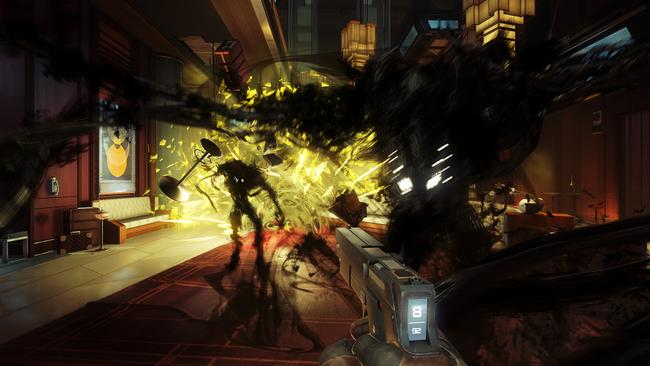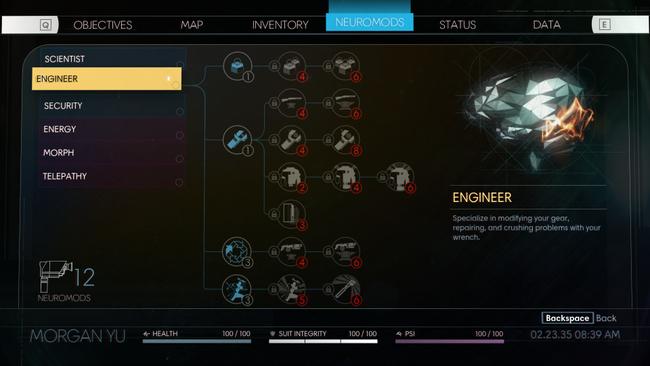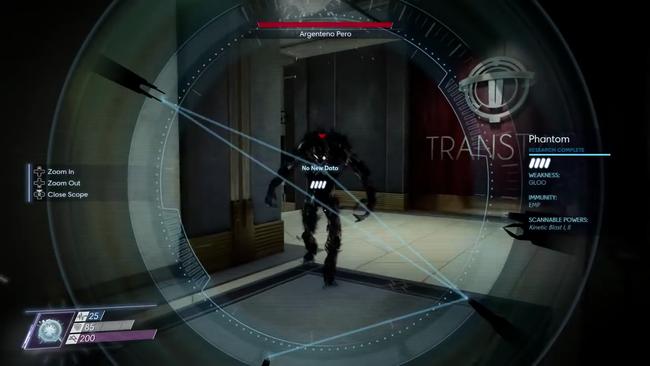Prey Review
What constitutes an identity? How strongly do past decisions define the present individual? These were not the sorts of ideas I was expecting to be contemplating after finishing Arkane's Prey, but the Bioshock inspired reboot of the 2006 entry of the same name offers up these sorts of questions and presents them in a way that reached a little farther than your typical FPS experience.
In Prey, you play as Morgan Yu, a scientist aboard the station Talos orbiting around Earth's moon. Under the leadership of Alex Yu, Morgan's brother, Talos is studying the alien lifeforms of the Typhon and the possibility of enhancing the human experience through the development of devices called Neuromods. Neuromods are capable of giving humans new talents and abilities ranging from instantly learning how to play a piano to being able to move objects telepathically. However, the use and removal of Neuromods comes with a high price: significant memory loss. Early in the course of the game, the containment of the alien Typhon falls apart and it's up to Morgan to stop the threat before the earth itself is compromised while uncovering forgotten details of his own past.
While not strictly an RPG, Prey blends in a lot of familiar RPG mechanics and conventions as it unfolds from this premise. While having skill trees and a limited selection of stat options is nowadays ubiquitous among many video game genres, Prey goes beyond just incorporating these devices. As the sequence of the Talos station compromise unveils itself throughout the course of the game, Morgan will encounter the histories of the station's inhabitants, some alive, many dead, and learn about the events that occurred before the outset of the game. The player will uncover notes on corpses, read old emails and logs, and encounter living persons also looking for a way off the station. Through this process, Morgan will uncover many quests asking the player to dig deeper into the lives of the Talos inhabitants.
The main themes of Prey involve identity and personhood. While this is a tricky subject to approach without spoiling major components of the game, it's a motif that repeats itself through the game's quests and even within its gameplay. The shape-shifting mimic enemies are, in a way, their own take on the subject of differentiating between what something appears to be and what it actually is. This same sort of distinction is made when undertaking the quests and talking to the characters of Talos, who will have preconceived notions of who Morgan Yu is, and the degree at which it lines up to the player's actions depends on the player themselves. I found that my take on Morgan's personality was a significant departure from the one I uncovered. While this could come across as incongruent in other games, the premise of Prey and memory loss allows it to work well here.

Sometimes the goal of undertaking the various questlines that approach and answer Morgan's questions is merely a functional one, such as to learn a code necessary to unlock a door in order to progress. Oftentimes however, these quests will involve smaller interactions between the various personal narratives of the station's crew. Morgan will learn about the budding love between two crew members through their email interactions, learn about the struggles of a Doctor and his failing memory: writing his anniversary date a dozen times on a note at his desk, and the player will even learn about his own history aboard the station. The game's premise involves Morgan having no recollection of his previous work aboard Talos, so all of the details learned about Morgan's past life is a revelation to both the player and the character. While some of the living members on the station will provide a few small details about what they know of Morgan in-game, most of the details are only gathered through these secondary means such. It's an interesting dynamic that works well.
As an FPS, Prey offers gameplay that is highly familiar to anyone that's played games like Bioshock or even Deus Ex. Like Bioshock, the player will have the ability to use conventional weapons such as pistols, shotguns, and laser weaponry, but they will also have the ability to specialize into powers bordering on magic, such as electric attacks and kinetic blasts. Specific enemy types will have weaknesses to certain types of attacks, and comboing the right combination of weapons and abilities is essential in order to have an easy time dispatching a room full of hostile Typhon. For instance, stunning an electrical type enemy with an EMP grenade and then swapping into a shotgun will go a whole lot smoother than simply ignoring the enemies weakness and hoping to brute-force his health to zero with your favorite weapon. It's a system that rewards good mental note taking about which weapons and abilities should be used on specific enemy types.

The enemy variety itself is, unfortunately, pretty limited. Visually, most of the enemies of the game are some variation of "purple tendril alien creature" and the lack of visual diversity is disappointing. Specific monsters come with certain abilities which alleviates this limitation a little bit, such as bipedal Typhon either having Thermal, Electrical, or Physic powers (along witht the accompanying weaknesses), but it still comes across as different flavors of the same enemy type. There are some mechanical type enemies too: Talos equipment that has been corrupted, but even these fall within the same color-coding well, where mechanical operators come in 3 different types but otherwise look the same. It's a small nitpick, but it would have been neat to see a little more differentiation between them.
The map design consists of segmented areas of Talos that are interconnected through various passages. Some area's like the Lobby will connect to multiple other areas through different doors on different levels of the station. Some are only accessible through one specific path, such as the Bridge only being available by trekking through the Arboretum. Other areas can be accessed by space-walking outside of the station in zero gravity. Players that are capable of developing a good mental map of the intricacies of the station's layout will have an easier time undertaking the various quests which will often ask them to revisit specific locations with new weapons, keys, or access codes on hand.
The non-linearity of the map design greatly rewards player ingenuity on a level that supremely impressed me. For instance, without having the access codes to a specific security room. I would place an apple on the floor and use a mimic shifting power to squeeze under the mail slot well before I could find the actual key card. Or being able to use the glue gun to create ad-hoc staircases to be able to reach elevated sections of a room long before being able to return power to the lifts. In this way, thinking outside the box can be very rewarding.
The one downside to this process is that there is a significant length of loading screens between each section of the ship. When exploring a new area for the first time, this wasn't a problem and was not something I noticed much in my first ten hours or so of playtime. A long loading screen would be followed by multiple hours of exploring a new location so the effect on my enjoyment wasn't substantial. Later in the game, however, when quests make it necessary to revisit locations, this often involved traveling through multiple sections of the ship without stopping, and thus going through multiple loading screens. What should have been couple minute detours became 15-minute slogs where I would often find myself getting up to heat up tea or grab a snack. In the back-half of the game, this was a serious impediment to my enjoyment of the overall experience.

Quest design is Prey is about half-meaningful, half-mundane. Certain quests will have players take data from various sources of the ship to find key cards, locate survivors or corpses, and reward players with access to rooms with copious ammo, neuromods, or other rewards for fulfilling various objectives. These will often involve the personal stories of the ship's crew and are meaningful to read and uncover as well as rewarding in terms of gathering materials or equipment. However, the other half of the quests involve tasks such as talking to a person, going to a location you've likely already been to grab something you couldn't before, and then bringing it back for a minor reward. Perhaps soured by the aforementioned loading-screen issues, but these quests quickly become chores and don't have the same level of engagement as the rest. Sometimes these quests can be done in parallel but often come in a sequence where the fetch-quest is left dangling on its own with nothing to buffer its relative banality.
The main narrative of Prey is not as strong as the smaller side stories uncovered in the email logs and quest progression, but it's still relatively solid and enough of a motivation to move the game forward. The player is initially given a certain perception of Alex Yu, Morgan's brother that is seemingly at fault with the problems that have occurred on Talos, and January, Morgan's quasi-AI operator that guides the player throughout the game. As the narrative unfolds, certain players can have different takes on which general path is more appropriate as they move towards the game's conclusion. There isn't a clear answer on which of the game's multiple endings is the most appropriate one, which is a credit to the game's solid writing. As soon as I saw one ending, I immediately wanted to see the other and loaded a save to see it as well. It's unfortunate though that the final conclusion of the game occurs regardless of which permutation of ending conditions was carried out.
Prey may borrow heavily from its predecessors but also blends them in a way and tackles a subject that comes across as refreshing and new even if the mechanics underneath are functionally derivative. The systems in place are familiar and recognizable but the machine built from these components is new and worthwhile. In this way, Prey follows up on its own primary theme in the most straightforward way: it takes common ideas and designs but out of these ingredients, still manages to form its own unique identity.